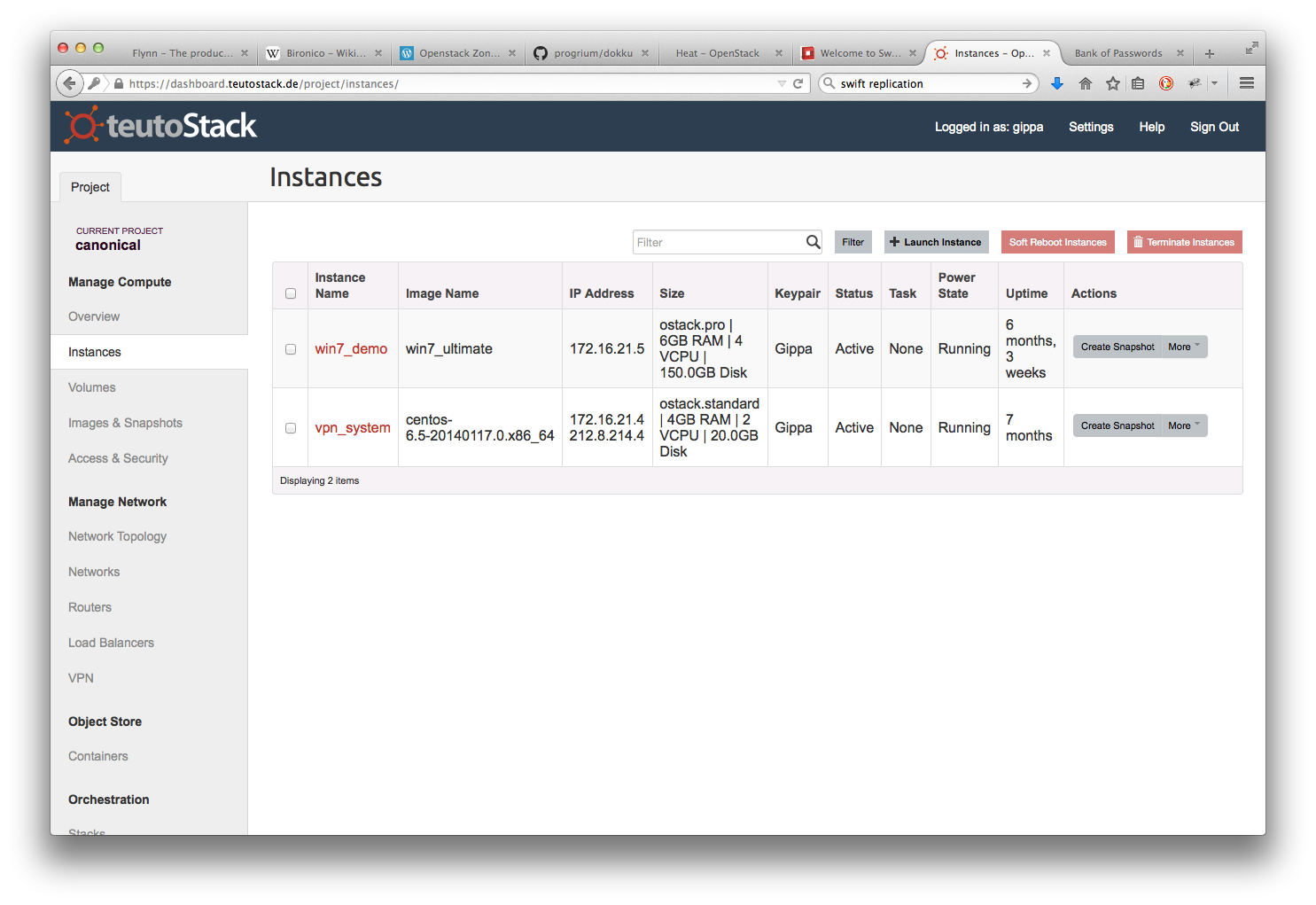Snapshot Openstack

Setting Description Availability Zone By default, this value is set to the availability zone that the cloud provider provides, for example, nova. Instance Name Assign a name to the VM.
In OpenStack, an instance snapshot is an image. The only difference between an image that you upload directly to glance and an image you create by snapshot is that an image created by snapshot has additional properties in the glance database. I have an existing OpenStack environment with around 20 running instances. I am creating a new environment (same OpenStack version, different servers, etc.) I am.
This value is a label and is not validated. Motorola Serial Number Decoding. When you create an instance, a UUID is assigned to the instance.

When you view the VM in vSphere, you can identify it by the UUID but not by the instance name. Flavor Specify the size of the instance to start. The cloud administrator defines and manages flavors. Instance Count To start multiple instances, enter a value greater than 1. The default is 1. Instance Boot Source Select Boot from snapshot, and select the snapshot from the list. • On the Access & Security tab of the Launch Instance dialog box, configure access and security parameters by specifying a key pair and security group.
Setting Description Key Pair Specify a key pair. If the image uses a static root password or a static key set, you do not need to provide a key pair to launch the instance.
A best practice is to use a key pair. Security Groups Select the security groups to assign to the instance.
Security groups are sets of rules that determine which incoming network traffic is forwarded to instances. If you did not create security groups, you can assign only the default security group to the instance. • On the Networking tab of the Launch Instance dialog box, click the + icon in the Available Networks field to add a network to the instance. • (Optional): On the Post-Creation tab, specify a customization script that runs after the instance starts. • In the Advanced Options tab, select the type of disk partition from the drop-down menu.